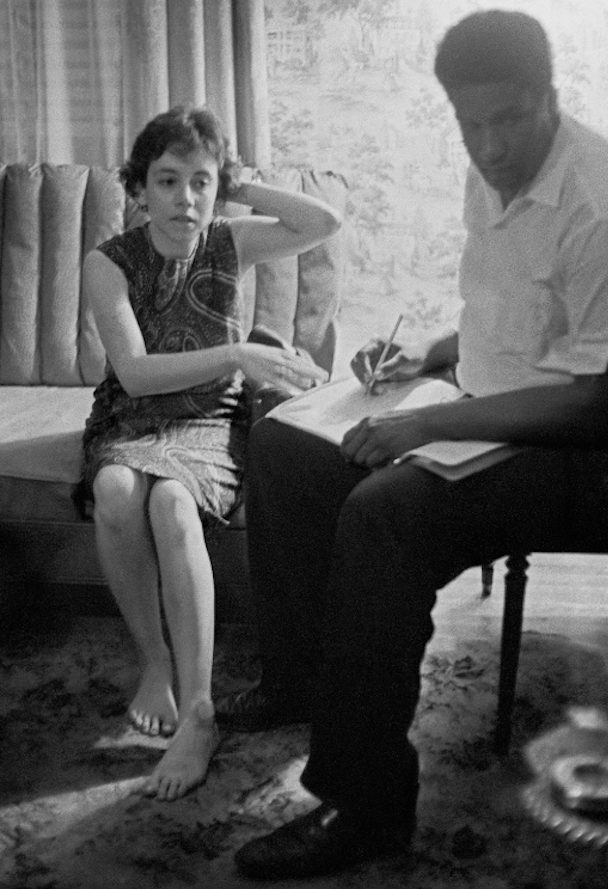By Lynn Burnett
Dottie Zellner grew up in an immigrant Jewish household in New York City. As she recalls, “I had grown up with the heroic stories of resistance to fascism, particularly of the young Jewish fighters of the Warsaw ghetto.” She was also taught to value Black freedom struggles, and even saw Paul Robeson and W.E.B. Du Bois. Dottie was 22 when the sit-ins began and was drawn to their efforts. She enrolled in a nonviolent resistance workshop, headed south, and began participating in sit-ins. When an image of her being arrested appeared in a southern newspaper, Dottie’s father was so proud he cut the article out of the paper and showed it to everyone.
Soon Dottie was working for SNCC, where she put her skills as a writer to use for SNCC’s newsletter. SNCC workers would come in from their work in the field, describe to Dottie the events that were unfolding, and she would make sure their stories got told. She was struck by how nonchalant everyone was as they described to her not only the patient organizing of communities, but the inevitable brutality that ensued. The reports that Dottie wrote were used to inform SNCC supporters around the country. As an official staff writer, Dottie worked on whatever SNCC’s writing needs were, from pamphlets to press releases to the “ceaseless stream of telegrams” sent to the Kennedy administration, “reporting each and every atrocity and urging them to intervene.”
She also saw her share of protests, got knocked down by fire hoses and police clubs, and was indicted under Virginia’s ludicrous “John Brown law,” which made it a felony to “incite colored people to acts of war and violence against the white population.” She skipped town and was careful about travelling through Virginia for years afterwards. In the build up to Freedom Summer, Dottie headed back to the North East, where she was the chief recruiter for volunteers in the region. Then she headed to Mississippi herself. There, in the words of the SNCC Digital Gateway, she answered calls “from civil rights workers who had been beaten, arrested, or had disappeared, thereafter alerting local authorities, the press and family members.”
A couple of years later Dottie was at work in the SNCC Atlanta office when Stokely Carmichael “asked me to draw a panther for the Lowndes County Freedom Organization campaign. I said no, I wasn’t that capable an artist.” Carmichael came back to her with a “rough line drawing of a panther” that had been made by SNCC member Ruth Howard, based on the mascot from a local Black college. Dottie remembers: “I cleaned it up, added better whiskers, and made it black, at his request,” said Dorothy of the drawing. “The next time I saw it, that image was on TV sometime in 1967—I was shocked!”
After SNCC, Dottie founded GROW with her husband Bob Zellner, which helped organize poor White southerners for racial and economic justice for 10 years. After GROW disbanded, Dottie and Bob parted ways, and she returned to New York after 22 years in the South. Today she is especially active in Palestinian solidarity work.
Additional Resources
Books
Dottie Zellner, “My Real Vocation,” Hands on the Freedom Plow: Personal Accounts by Women in SNCC, edited by Faith S. Holsaert et al.
Articles
Lincoln Cushing: The Women Behind the Black Panther Party Logo.
Digital SNCC Gateway: Dorothy Zellner. (Contains great primary sources.)
SNCC Legacy Project: Twitter thread about Dottie. (The thread also describes the image of her with James Forman.)
Wikipedia entry.
Dottie Zellner:
- What Ella Baker Taught Us About Ferguson And Gaza.
- From Mississippi to Gaza — Dorothy Zellner reflects on 50 years of struggle.
Video
The Civil Rights History Project: Interview with Dottie Zellner.
